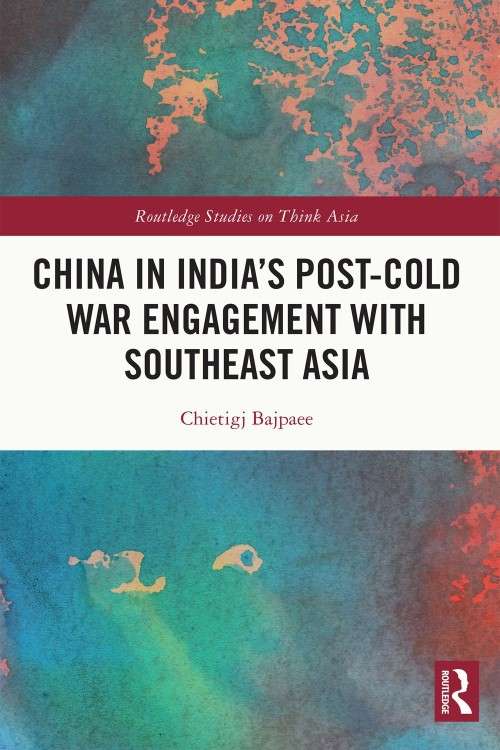The Sino-Indian strategic contest has become an undeniable reality of the contemporary international system where the broader US-China multileveled competition has taken on many faces and affected the politics of different regions where South Asia and Southeast Asia are the exceptions. Indian increasing strategic collaboration with the United States and American growing global anti-Chines engagements has forced the Chinese state to adopt a defensive approach mainly consisting of their geoeconomic calculations.
America’s increasing multidimensional strategic collaboration with India has become one of the leading focusing points of international academic communities. These communities have maintained a comprehensive literature on the growing India-China confrontational interaction and its effects on different regions such as South Asia and Southeast Asia. Akin to various other studies addressing the question of China-India interaction comprising of bilateral confrontational and cooperation, the book under review provides a historical account of China in Indian policies. This book primarily reviews Beijing’s role in the post-Cold War international system in which the disappearance of the Soviet Union from world politics compelled various states to alter their foreign policy priorities. Under the growing pressures of the Soviet-less international system, the Indian government decided to revise the conventional framework of New Delhi’s foreign relations with other states beyond its home region. The writer of the book, Chietigj Bajpaee, focused on the emergence of New Delhi’s altered foreign policy framework and started developing cooperative ties with the states of Southeast Asia. While considering China a potential rival capable of undermining the Indian quest for a dominating status in the geoeconomic competition of broader Asian power politics, the academic account of Bajpaee provides an in-depth analysis of New Delhi’s growing interests in the Southeast Asian region cemented in its Look East Policy. It is fundamentally a story of transformation from Look East to Act East.
The author is an Indian national having vast experience of serving in different research academic institutions and independent research organizations. Based on his academic background, he has maintained an exclusive account of the Indian Look East Policy and its changing patterns from the end of the Cold War to the arrival of Modi in Indian politics. The story between the emergence of the post-Cold War international system in 1992 and the rise of Modi as Indian Prime Minister in 2014 marked some turning points, such as 9/11.
In the post-9/11 international system the Indian government started formalizing strategic partnership with the United States and decided to oppose China’s role in South and Southeast Asia. In contrast to South Asia, the foreign relations of New Delhi with the members of the Association of Southeast Asian Nations (ASEAN), where China is the main contestant of India. The book is divided into eight chapters, including the first ‘introductory’ and the last ‘concluding’ chapters. The chapter discussed the different phases of the Look East Policy by starting the debate by launching this policy. The conceptual survey of Look East Policy comprising of three categories (neoliberal, hyper-realist, and Nehruvian) continued the author’s arguments in all chapters of the book. The book reviews Beijing’s status in the post-Cold War international system and its increasing engagement with the members of ASEAN, which has let the states of Southeast Asia realize Beijing’s role as a reliable economic partner and an active strategic competitor. The expanding Chinese trading influence across the world and the decision of Chinese state officials to address the economic difficulties of its leading trading partners inflict a sense of insecurity in the Indian mindset. The book has undoubtedly explained the upsetting strategic priorities of New Delhi because of several actors, such as the economic rise of China, its growing geopolitical competition in the surrounding regions, Beijing-sponsored
infrastructure projects for its leading trading partners, and Chinese cooperative interaction with different multilateral frameworks of states mainly shape Indian foreign policy.
The case of Southeast Asia is the central point of the book in which it is rationalized that the Indian policymakers have accepted China as a potential security threat in the geoeconomic features of the broader Asian power balance. The analysis of Bajpaee in the book also discussed the challenges and opportunities for the Indian government in the Southeast Asian region, which has led New Delhi to navigate China’s growing influence in the ASEAN region effectively. The combination of cooperation-competition is a unique attribute of the India-China bilateral interaction, which has been explained in the eight chapters of the book. In other words, the academic investigation of the author tried to advocate that the Chinese multiplying trading agreements with the Southeast Asian nations have become a significant factor in shaping New Delhi’s multileveled economic and strategic engagements with ASEAN members. This development became an undeniable reality in the post-Cold War international system when India was in search of acquiring an influential role in the newly emerged Soviet-less world.
Based on the features above mentioned, there is no harm in saying that this book is an appreciable addition to the existing literature on India’s growing hostile relations with the territorially adjoining states. It is an appropriate study to understand the positions of India and China in the regional politics of Southeast Asia where both states have become active extra-regional players in the politics of the ASEAN region.





